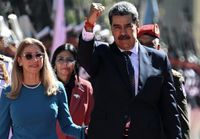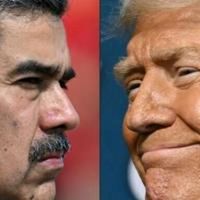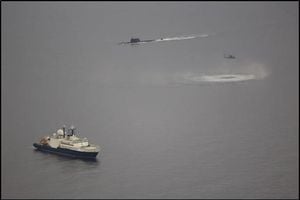Venezuela is once again at the center of a geopolitical storm, as President Nicolás Maduro announced on Monday, August 18, 2025, a sweeping plan to mobilize more than 4.5 million militia members across the country. The move, broadcast live on state television, comes in direct response to what Maduro described as "extravagant, bizarre and outlandish threats" from the United States, which recently doubled its reward for his arrest to a staggering $50 million and sent a show of military force to the Caribbean.
"This week, I will activate a special plan with more than 4.5 million militiamen to ensure coverage of the entire national territory — militias that are prepared, activated and armed," Maduro declared, flanked by senior military commanders and beaming with defiance. According to official figures, the Venezuelan militia—founded by Maduro’s predecessor Hugo Chávez—boasts about 5 million members, though independent estimates suggest the actual number is somewhat lower. With Venezuela’s population hovering around 30 million, the scale of the mobilization is striking, if not unprecedented.
The timing of Maduro’s announcement is no accident. Earlier in August, the Trump administration doubled its bounty for information leading to Maduro’s capture, now offering $50 million, and accused him of heading the so-called Cartel de los Soles, a criminal organization allegedly responsible for turning Venezuela into a major hub for cocaine trafficking. The U.S. government has also ramped up sanctions, targeting Maduro’s administration and designating groups like Venezuela’s Tren de Aragua and the Cartel de los Soles as foreign terrorist organizations. These moves, according to Reuters and France 24, are part of a broader campaign to pressure the Maduro regime and stem the flow of illegal drugs into the United States.
But Washington’s pressure isn’t just economic or legal. In a show of force, three U.S. Navy Aegis-guided missile destroyers—the USS Gravely, USS Jason Dunham, and USS Sampson—are reportedly steaming toward the southern Caribbean, carrying thousands of Marines. The deployment, which also includes P-8 Poseidon surveillance aircraft, a nuclear-powered attack submarine, and other warships, is one of the largest in the region since the 1989 U.S. invasion of Panama. A senior U.S. official told Reuters that the operation involves about 4,000 sailors and Marines and is designed for intelligence gathering and surveillance, though the units could serve as a platform for "targeted strikes" if President Trump gives the order.
"We are also deployed throughout the Caribbean ... in our sea, our property, Venezuelan territory," Interior Minister Diosdado Cabello said, emphasizing the government’s determination to defend its borders and sovereignty. Maduro, for his part, called on his supporters to accelerate the creation of peasant and worker militias in all industries, urging, "Rifles and missiles for the peasant force! To defend the territory, sovereignty, and peace of Venezuela." He added, "The first to step forward in support of this working-class president were the military of this homeland, with their rifles, missiles, tanks, and planes." These words, reported by Latin Times, underscore Maduro’s reliance on both the traditional armed forces and the so-called Bolivarian National Militia, a volunteer corps recognized as the fifth branch of Venezuela’s military since its creation by Hugo Chávez in 2007.
The United States, meanwhile, justifies its actions as part of a larger counternarcotics strategy and a response to what it sees as a narco-state in Caracas. According to the White House, the Caribbean deployment aims to disrupt criminal cartels, strengthen border control, and send a clear warning to regimes accused of enabling drug trafficking. Captain Chris Farricker, commander of Amphibious Squadron 8, described the deployment as "an integral part of advancing our nations’ interests abroad and is a dynamic representation of our Navy’s 250 years of lethality and warfighting excellence." The U.S. Southern Command confirmed the involvement of the Iwo Jima Amphibious Ready Group, which includes the amphibious assault ship USS Iwo Jima, the transport dock USS San Antonio, and the landing ship USS Fort Lauderdale, along with the 22nd Marine Expeditionary Unit—about 4,000 troops capable of rapid deployment by air, land, or sea.
For Maduro, however, the U.S. threats are nothing more than a "rotting rerun" intended to justify foreign intervention and destabilize Venezuela. He dismissed the drug trafficking allegations as politically motivated, designed to rally international support against his government. "Venezuela will defend its seas, its skies, and its land in the face of the strange and unprecedented threat posed by a declining empire," Maduro warned, echoing the rhetoric that has defined his presidency since taking office after Chávez’s death in 2013.
The Bolivarian National Militia, often described by the government as "the people in arms," is made up of volunteers and reservists drawn from across Venezuelan society. While the official tally hovers near 5 million, outside observers question the real number and the effectiveness of such a massive mobilization. Still, the symbolism is powerful: millions of ordinary Venezuelans, many with little formal military training, are being called to defend the nation’s sovereignty at a moment of heightened international tension.
The current standoff is only the latest chapter in a long saga of U.S.-Venezuelan hostility. Since the disputed elections that kept Maduro in power, Washington has refused to recognize his legitimacy, accusing him of electoral fraud and human rights abuses. In turn, Maduro has accused the U.S. of economic warfare, coup plots, and now, military intimidation. The deployment of U.S. warships off Venezuela’s coast, combined with the record-breaking bounty on Maduro’s head, marks a dramatic escalation that has left the region—and much of the world—watching anxiously.
For ordinary Venezuelans, the mobilization of millions of militia members is both a rallying cry and a reminder of the nation’s deep divisions. Supporters of the government see it as a necessary step to defend against foreign aggression, while critics worry about the potential for increased repression, militarization, and the risk of violent confrontation. As the world waits to see whether this latest crisis will escalate further, one thing is clear: the stakes for Venezuela, and for the broader region, have rarely been higher.
With both sides digging in and rhetoric reaching fever pitch, the coming days will test not only the resolve of Venezuela’s leaders and people, but also the limits of U.S. power in its own hemisphere. Whether this standoff ends in negotiation or confrontation remains to be seen, but for now, Venezuela’s militias are on the march—and the world is watching.






